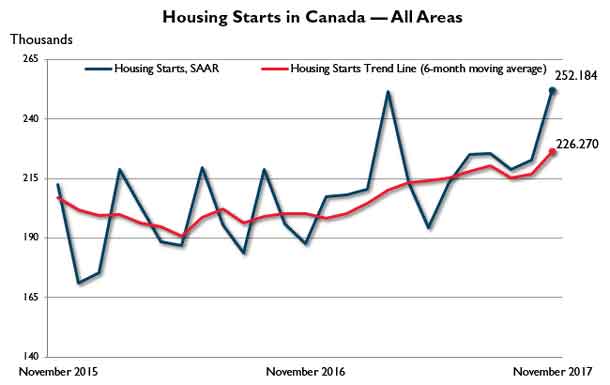
Thunder Bay Market Up as Ontario Market Drops
THUNDER BAY – BUSINESS – Housing starts in Thunder Bay, Census Metropolitan Area (CMA) were trending at 178 units in July, up from 122 units in June according to Canada Mortgage and Housing Corporation (CMHC). The trend is a six month moving average of the monthly seasonally adjusted annual rates (SAAR) of housing starts.
“The upward trend in housing starts in Thunder Bay comes as a result of another strong month of housing starts. Inventories of completed and unsold units have fallen and starts have been steady during the prime building months in the local market. Building permits in July, a precursor to August starts, combined with continuing weak employment suggest the monthly SAAR should drop back towards the trend line as we move through the third quarter in Thunder Bay,” commented Warren Philp, CMHC Market Analyst.
Thunder Bay’s market is bucking the Ontario trend.
Housing starts in the Ontario region were trending at 58,736 units in July, down from 60,305 units in June, according to Canada Mortgage and Housing Corporation (CMHC). The trend is a six month moving average of the monthly seasonally adjusted annual rates (SAAR)1 of housing starts.
“For a second consecutive month, the trend in Ontario residential construction activity dipped due largely to the apartment sector. Low density housing construction, which is a better barometer of the health of the new construction market due to its stability, posted growth suggesting that economic fundamentals continue to support provincial home starts. An improving job market, strong resale markets and more resources released to commence construction on a backlog of sold apartment units will continue to support starts activity across the province,” said Ted Tsiakopoulos, CMHC’s Ontario Regional Economist.
CMHC uses the trend measure as a complement to the monthly SAAR of housing starts to account for considerable swings in monthly estimates and obtain a more complete picture of the state of the housing market. In some situations, analysing only SAAR data can be misleading in some markets, as they are largely driven by the multiples segment of the markets which can be quite variable from one month to the next.
The standalone monthly SAAR was 411 units in July up from 309 units in June. This jump in the monthly SAAR came due to another strong singles starts month in July, as well as a significant increase in apartment starts.






